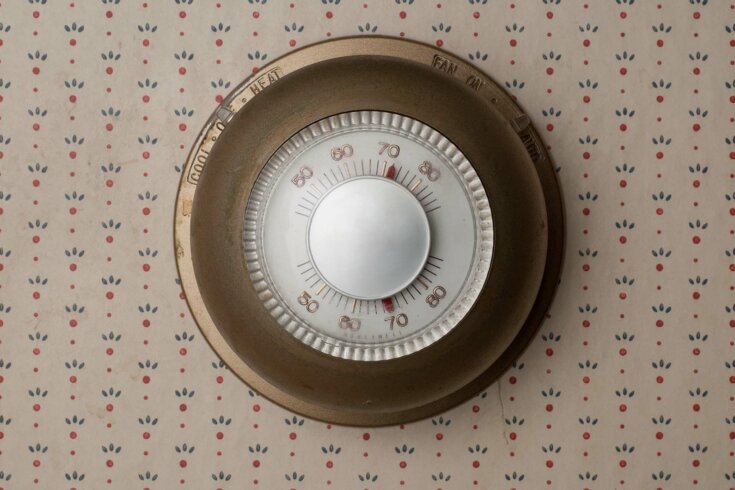On a frigid Montreal morning two winters ago, I jumped out of bed and ran down the stairs of my condo, landing right in front of the living room’s thermostat, which I lowered by two degrees, under the skeptical gaze of my partner. No matter that the room, with its four large windows, was already uncomfortably cool. I was participating in my first Hydro-Québec “peak demand event,” and nothing was going to stop me.
I had just signed up for an energy-savings program. Several times throughout the cold season, Hydro-Québec would email me to curb my regular electricity consumption during peak demand hours (say, 6 to 9 a.m. or 4 to 8 p.m.). If I complied and cut two kilowatt hours (kWh), I would receive a credit on my next bill for those savings and for every further kWh erased. If I failed, there would be no penalty. What’s not to like?
But when I pulled up the data a couple of days later, my competitive spirit was crushed. I had not reached the minimum threshold of two kWh (about the equivalent of running an oven for an hour) to make any dent in my bill. Last winter, I earned a paltry $2.74. This winter, I stopped trying and made $1.22.
My next-door neighbour has gotten better results. He’s part of a more ambitious energy-savings program called Hilo, a former subsidiary that is now being integrated into Hydro-Québec. After buying smart thermostats at a steep discount, he is letting the utility guide the temperature management in his house, up to thirty times a year, from December through March. During those “challenges,” he can choose between three levels of temperature curbs: “moderate,” “intrepid,” and, at a whopping six degrees, “extreme.” (The utility raises the heat beforehand, on request, and participants can opt out up to five times per winter.) Feeling chilly on sunless days has paid off for him: he earned $113 this winter, nearly 13 percent of his annual bill.
He’s not really in it for the money, though. For one, he loves to control temperature settings from his phone. More importantly, he also wants to do his bit for the environment.
Hydro-Québec will have to persuade hundreds of thousands of residents to emulate his behaviour within the next decade. In November, the utility unveiled its strategy on how to meet the expected boom in electricity demand in the coming years, a consequence of the push to decarbonize the economy. It aims to triple wind power production capacity, modernize its hydroelectric plants, and add new ones by 2035. But the plan also relies heavily on transforming Quebecers’ homes, workplaces, and lifestyles in the long term.
Hydro-Québec wants to save twenty-one terawatt hours by 2035, more than what 1.2 million households consume in a year, in part by encouraging clients to cut or shift their energy consumption. It’s an ambitious goal. But the utility believes it can directly influence consumer habits with financial incentives to better insulate homes, install heat pumps, and lower thermostats at times when everyone wants electricity. (Hydro-Québec says its programs are aimed at companies, too, which currently shoulder almost two-thirds of peak-hour curbs.) Now, it just needs to get the message across.
It’s trying. Last year, it tapped Martin St. Louis for a hockey-themed commercial, in which the Montréal Canadiens coach compares energy consumption with the defence component of a good game plan.
Once lambasted by journalists for its lack of transparency, Hydro-Québec has worked on engaging the public more closely through social media in the past decade, honing a distinctive tongue-in-cheek tone that it occasionally deploys against its critics. In its Votre tweet est important pour nous (Your tweet is important to us) podcast, bantering hosts address commentary Hydro-Québec receives on X, Facebook, and other online platforms. While many consumers seem primarily concerned with whether electricity rates will go up in the future, there’s also been lots of chatter about energy efficiency, says Jonathan Côté, the utility’s social media lead, who also appears on the podcast. Some of the most popular questions on social media, he says, include: “Why should I make energy efficiency efforts? Aren’t we supposed to have abundant electricity in Quebec?”
To be frank, I have asked myself similar questions. I’m all for consuming energy strategically: I grew up in France, a country where people have mastered the art of running their dishwashers at night to take advantage of off-peak rates. Even so, Hydro-Québec’s rewards-based approach didn’t work on me. What chance will it have with a population that’s grown up on cheap and plentiful electricity?
Just a few years ago, Hydro-Québec was saying it had the capacity to produce far more power than it needed, with the province mounting a diplomatic offensive to sign long-term supply contracts with the US northeast. Now, as Quebec’s economy, innovation, and energy minister Pierre Fitzgibbon put it in a speech in May 2023, “surpluses have melted like glaciers under the sun of climate change.”
At least, they’re melting fast: a lot of that extra power will likely be zapped up by companies planning to make hydrogen, electric battery components, or other projects linked to the energy transition. Quebec’s renewable power is particularly attractive to international companies trying to lower their carbon footprints. And the price is hard to beat: large consumers in Montreal paid 5.55 cents per kWh before tax in April 2023, 37.5 percent less than in Toronto and less than a third of what they pay in New York City, according to Hydro-Québec. The province has successfully courted companies, including General Motors and Sweden’s Northvolt, to build EV battery plants, and Volta Energy Solutions, a subsidiary of a South Korean company, to produce copper foil for EVs. By January 2023, power demand for proposed industrial projects quickly ballooned to 23,000 megawatts, about half of Hydro-Québec’s capacity, and far more than it could allocate. In that context, the 2035 strategy looks more like a catch-up plan than a vision.
Pierre-Olivier Pineau, a professor and energy expert at the business school HEC Montréal, says that going forward, the province should charge industrial clients for additional consumption to reflect the cost of new infrastructure. He also believes residential rates, which stand far below those in places like Toronto and Chicago, should be hiked too. The government is taking small steps in that direction: in early June, Fitzgibbon presented a bill that could ultimately lead to higher rates for large commercial consumers and opens the door to limited price increases for households in the coming years.
In Pineau’s view, a rewards-based approach won’t prevent overconsumption on its own. “We unfortunately must move into a world that’s not just about Halloween candies,” he says. “If we want to do the energy transition, we’ll have to accept some constraints.”
A recent experiment he jointly conducted showed a majority of participants were ready to pay more for electricity when the economic and environmental reasons were clearly explained. Among the general population, however, the idea of raising prices to help reduce consumption still seems unpopular. In a recent Leger poll, 83 percent of respondents consider it a bad idea.
The aversion runs deep. Unbearably high prices were a major driver behind Quebec’s move, in 1944, to nationalize large private electrical utilities in the Montreal region, says Stéphane Savard, a history professor at the Université du Québec à Montréal who wrote a book on the utility. The newly formed Hydro-Québec, Savard says, dropped rates significantly.
In 1963, the Liberal government of Premier Jean Lesage continued efforts that had begun in the previous decade to nationalize electricity—part of seminal policies that modernized Quebec and empowered French Canadians in a province long dominated by the English-speaking business community. The idea was that electricity was such an important source of energy for Quebec’s industrialization that it would be key to economic emancipation, says Savard.
Hydro-Québec bought out more power distributors and went on to build massive dams in remote areas, becoming a symbol of Quebec nationalism and a source of pride. (It has also faced criticism from environmentalists and Indigenous groups for its impact on the land.) That history fostered a unique relationship between many Quebecers and their utility, one that the company now draws on to address concerns.
To detractors, Hydro-Québec spokespeople insist that the energy transition will push electricity demand higher, reinforcing the importance of consuming responsibly what we have now. Some consumers wonder how they can be expected to curb their electricity use when the province is pushing for more car owners to switch to electric vehicles. In response, Côté and his colleagues stress that electric cars are only part of a broader solution for lowering emissions that also includes more frequent car sharing and greater use of public transportation.
Nothing wrong with that. But Quebec is nowhere near its 2030 goals to reduce gasoline consumption in transportation to 40 percent below 2013 levels or to curb solo car commutes. The greater Montreal public transportation network faces an abysmal deficit that mayors are scrambling to plug. Meanwhile, governments around the world are propping up the car industry by subsidizing electric vehicles, warns Colin Pratte, an analyst at the Research and Socioeconomic Information Institute in Montreal, who tracks transportation and environmental issues. Quebec’s latest infrastructure maintenance plan earmarks nearly $3 billion more for roads while allocating $41.3 million toward public transportation, he adds.
To me, the most glaring contradiction is this focus on consuming less electricity without encouraging people to consume less of anything else. Is an electrified world that much better if we keep on buying big homes and big cars? Seeing as how electric trucks (including SUVs) are more popular in the province than smaller electric cars, I wonder if we are collectively defeating the purpose.
Where does that leave me, as a consumer? I’ll probably end up taking advantage of one of Hydro-Québec’s subsidies to buy an energy-efficient stove or smart thermostats. Perhaps I’ll even follow my neighbour’s discipline and lower the temperature further in winter. But I’d do it more readily if I were confident other crucial aspects of our lives, including the way we build houses and move around, were as much of a priority. Otherwise, all my genuine efforts to save energy might end up being a waste of time.





